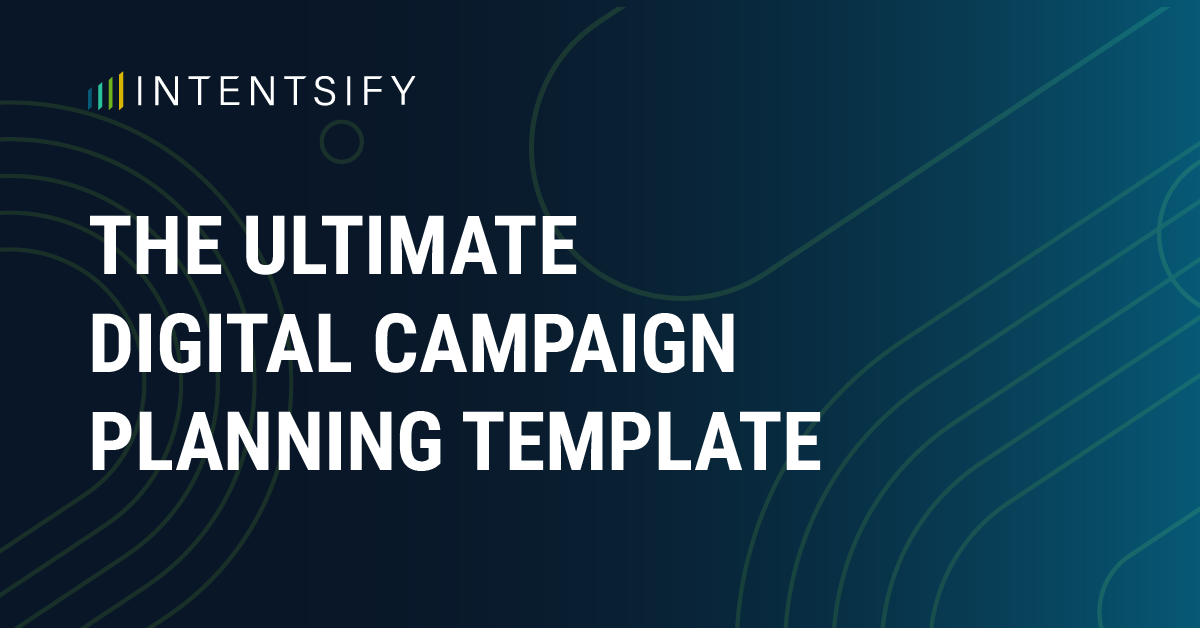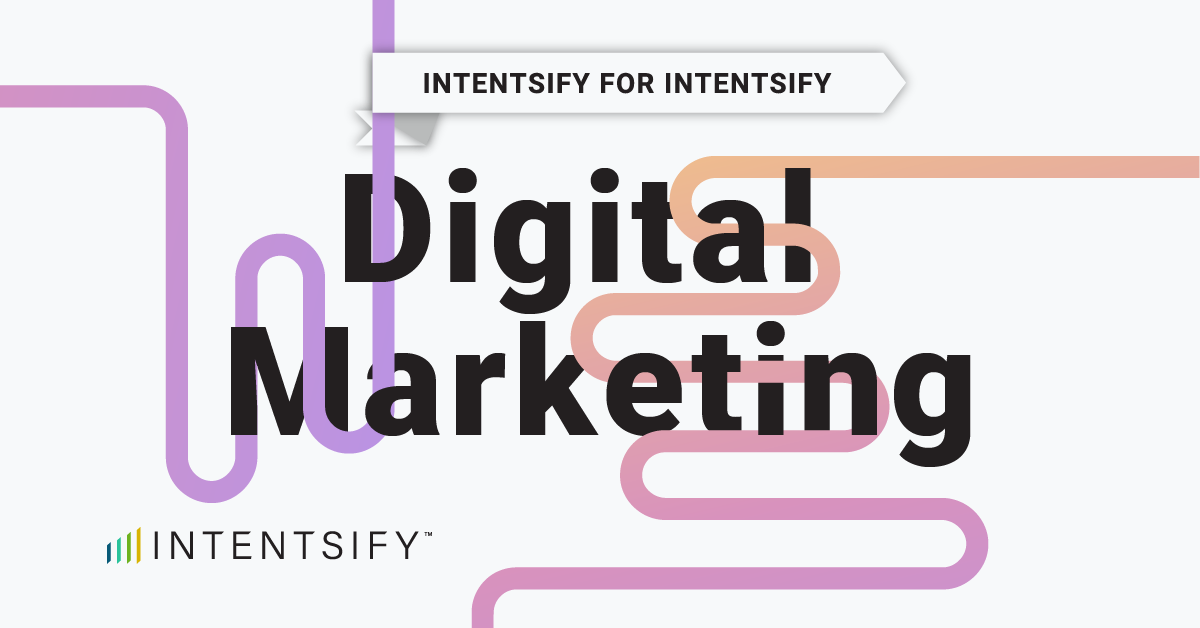As a marketer, you know the power of aligning brand awareness and demand generation efforts. By launching content syndication and digital ads simultaneously, you can reach more of your target buying group with a coordinated message — fueling your pipeline and driving real results.
But where do you start? In this post, we’ll walk through the essential steps to set up a successful digital marketing campaign using our comprehensive planning template. Get ready to unlock the full potential of signal-based marketing, customized intent models, and integrated content syndication and display advertising.
Step 1: Building Your Custom Intent Model
Start by building out your target account list (TAL). Best practices suggest including 3x the number of leads you want to generate, removing any competitors or your own brand. Ensure there are no duplicates across your lists. To further refine your list, in the Intentsify platform you can layer on firmographic parameters such as geographic location, industry, employee size and annual revenue.
Intentsify can also build out a lookalike list using the provided TAL.
Next, identify the topics and keywords you want to monitor for intent signals. This could include 15-20 relevant terms and phrases based on your offering and target audience. Intentsify’s Autodiscovery tool can help recommend the optimal set.
Finally, define your target buying group. You can further refine this by layering in persona details like job title, function, and job keywords.
Step 2: Plan Your Content Syndication Program
The first key is selecting the right content assets to promote. Your previously built Intent Model can help guide you through what content is resonating best with your target audience.
Best practices recommend featuring 3-5 pieces that span different formats and stages of the buyer’s journey:
- Awareness: Thought leadership, industry reports, eBooks
- Interest: Self-guided demos, guides, playbooks
- Evaluation: Social proof, videos, webinars
- Decision: Case studies, pricing info, ROI stats
Your demand gen assets should be:
- Educational – informing your target audience about current industry trends and challenges they’re facing
- Engaging – appealing, relevant, and easily absorbed by your audience (especially the title)
- Prescriptive – providing actionable advice on what your target audience can do to improve their efforts
- Branded – introducing your brand’s approach to solving the audience’s problem and how you can help
For each asset, you’ll also need to craft compelling email subject lines, supporting body copy, and abstracts. These will be used across your content syndication landing pages and outreach.
Next, set your lead generation goal. This will depend on factors like your expected conversion rate from lead to opportunity. For example, if you anticipate a 10% conversion rate, and want to generate 50 opportunities, you’d need to target around 500 leads.
For each asset, you’ll also need to craft compelling email subject lines, supporting body copy, and abstracts. These will be used across your content syndication landing pages and outreach.
Next, set your lead generation goal. This will depend on factors like your expected conversion rate from lead to opportunity. For example, if you anticipate a 10% conversion rate, and want to generate 50 opportunities, you’d need to target around 500 leads.
Step 3: Plan Your Display Advertising Strategy
Now let’s tackle the display advertising side. First, determine your campaign timeline and budget. Aim to align the flight dates of your display ads with your content syndication program for maximum impact.
It is important to make sure you are reaching your previously defined target audience. IP-based targeting is a great starting point, allowing you to serve ads to accounts demonstrating intent. You can further refine this by layering in persona details like job title, industry, and location. Combining IP-address and device-level targeting, your ads reach the right personas across multiple touchpoints.
Don’t forget about retargeting either. By syncing up your website visitors and content syndication leads, you can continue nurturing those prospects with tailored display ads.
Finally, design your ad creatives to the optimal sizes and formats. Make sure to map each ad to a relevant landing page that aligns with your key messaging and call-to-action.
Putting It All Together
By following this comprehensive digital campaign planning template, you’ll be positioned for success. Integrate your content syndication and display advertising efforts to reach the right accounts, at the right time, with the right message.
The good news is, you don’t have to do it all yourself. Intentsify offers a full-service solution that handles the heavy lifting. We’ll take your campaign parameters, manage the ad and content placement, optimize budget pacing, and deliver qualified leads right to your CRM.
Ready to take the next step? [Download the full Digital Campaign Planning Template] to kickstart your next high-impact digital initiative.






